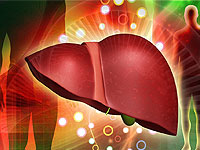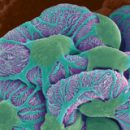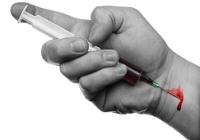On September 7, 2013, the starting meeting of the researchers of the epidemiological study on the study of the prevalence of non-alcoholic liver disease (NSPPP) and determining the risk factors for the development of the disease among patients of outpatient polyclinic practice - Direg 2. The first patient was included in the study on September 9, 2013.
Content
 The starting meeting of the researchers is held in order to clarify the doctors of the study details, discuss the Protocol and answer the emerging issues. An innovative approach in organizing the starting meeting was the possibility of researchers to take part in it remotely. Part of the doctors came to the meeting to Moscow, for the rest was organized by Internet broadcast, which gave the opportunity to see performances and ask questions to national coordinators.
The starting meeting of the researchers is held in order to clarify the doctors of the study details, discuss the Protocol and answer the emerging issues. An innovative approach in organizing the starting meeting was the possibility of researchers to take part in it remotely. Part of the doctors came to the meeting to Moscow, for the rest was organized by Internet broadcast, which gave the opportunity to see performances and ask questions to national coordinators.
Direg 2 is a descriptive epidemiological observational multicenter study. Direg 2 is held with the support of Sanofi under the auspices of the Scientific Council on the Therapy of the RAMS and the National Internet Society of Society for Internal Diseases. National coordinators are the main freelance specialist-gastroenterologist of the Ministry of Health of Russia Acad. Ramne D. M. N., Prof. IN. T. Ivashkin and D. M. N., Prof. O. M. Drakkin.
The study will include patients aged 12 to 80 years, which come to the primary or re-outpatient reception to the doctors of the clinic (general practitioners, therapists, pediatricians, gastroenterologists), regardless of the cause of treatment, including patients with suspicion of the diagnosis of NAFS — having obesity, type 2 diabetes, dyslipidemia, metabolic syndrome, arterial hypertension, deviations from cholesterol level.
The main task of Direg 2 is to evaluate the prevalence of NAFF among patients outpatient practice. It will be very important to evaluate the dynamics of risk factors — The results obtained will be assessed in comparison with previous data obtained during the Direg 1, completed in 2008. Then, among other results, it was revealed that more than 1/3 patients older than 48 years have signs of NAFLP. Therefore, it is now extremely important to get an answer to the following questions: how the dynamics of the prevalence of NAFF with outpatient patients changed in the last 5 years? Is there a tendency to increase the prevalence of NAFF?
The first patient was included in the Direg 2 almost immediately at the end of the starting meeting of the researchers — 9th of September. This accurately complies with the stated plans. The estimated duration of the patient's set in this study is 9 months — From September 2013 to June 2014.
Especially I want to emphasize the unprecedented scale of the study — both in terms of investment and by the number of participants: 1,000 doctors and 50,000 patients in 16 cities of Russia (Moscow; St. Petersburg; Yaroslavl; Bryansk; Krasnodar; Rostov-on-Don; Voronezh; Ekaterinburg; Ufa; Nizhny Novgorod; Krasnoyarsk; Vladivostok; Novosibirsk; Irkutsk; Chelyabinsk; Perm). Today Direg 2 — One of the largest studies conducted in Russia.









